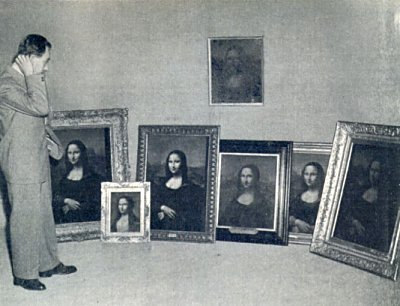On 9 Nov, 2010 With
Confronting the Issue of Fake Art (original version of a story I wrote for Mumbai Mirror, which was cut down to 400 words, but I will complain about that some other day) Buyer Beware How to avoid becoming a victim of art fraud by Amitabh Nanda The next time you’re approached about a fantastic investment in an Indian work of art, BEWARE, because it is more than possible that you are buying a fake. According to an alarming estimate made by Thomas Hoving, former director of the Metropolitan Museum of Art, up to 40% of all the works in circulation globally are really forgeries, and in the last few years, a massive number of fakes have seeped into the local art…
Read More
On 23 Oct, 2010 With
Some counterfeiters try to enter the “soul and mind of the artist.” Some delight in the chemistry of baking paint and creating wormholes. Some start with real pictures and then “restore” them until they look as if they’re by a different artist. From ancient vases to conceptual art—if someone made it, someone else has tried to bamboozle the world with a copy. by Milton Esterow In Italy,” Salvatore Casillo, who founded the University of Salerno’s Museum of Fakes, recently commented, “if you’re a good enough counterfeiter, you eventually get your own show.” Casillo was right. Several good-enough counterfeiters have recently had their own shows. Icilio Federico Joni, who was known as the prince of Sienese fakers and specialized in Renaissance…
Read More
On 9 Sep, 2010 With
For many years The Virgin and Child with an Angel was prized as Francesco Francia’s earliest known dated painting (faintly signed and dated 1490) and for representing, in the chalice held by the angel, the only known example of the type of object Francia may have produced during his presumed earlier career as a goldsmith. But in 1954 an apparently identical version surfaced in a London auction. A thorough investigation of both paintings was undertaken to determine which was Francia’s original. Side-by-side investigation In 1955 examination of the National Gallery painting found the wood panel,ground and paint layers to be reasonably consistent with 15th-century practice, although it was noted that the gessoground was a remarkably bright white. The imprimatura was a pinkish-brown. Although most unusual…
Read More


